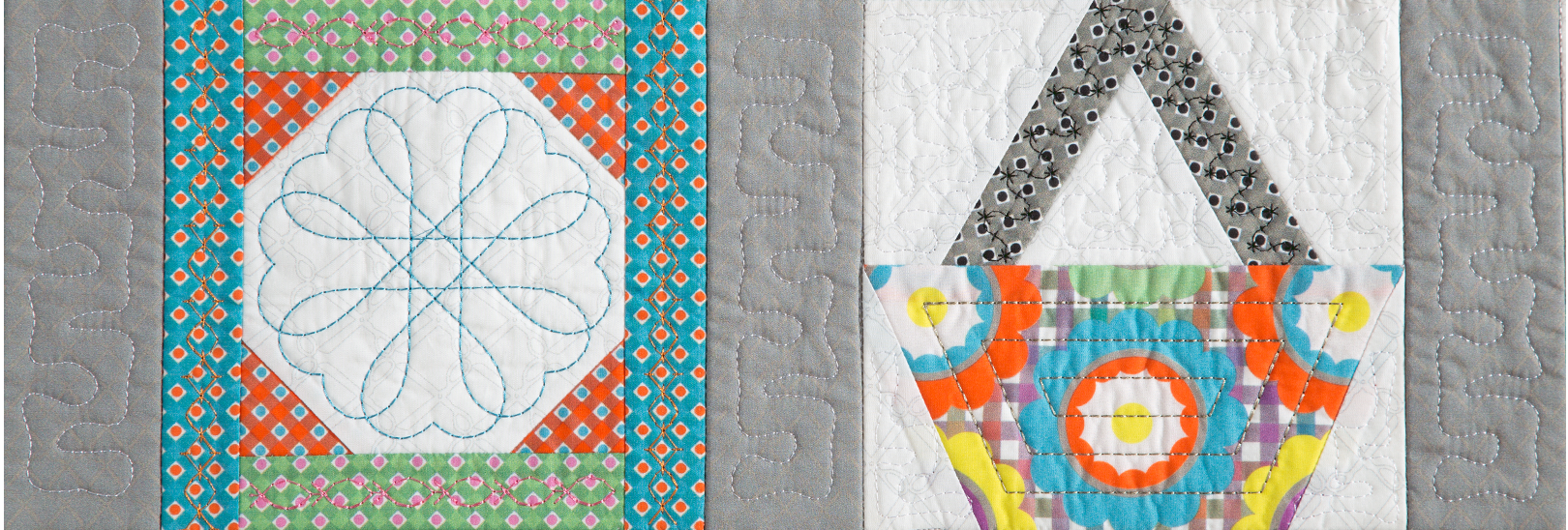My latest order from an interior decorator consisted of 6 large monograms embroidered on expensive damask fabric for dining room chairs. The monogram is created by the designer and is sent to me to be digitized into an embroidery file.
We usually correspond back and forth a few times so I can gather the following information: fabric content, end use of fabric to be stitched and size desired. These three key factors are crucial when planning the embroidery process. As I mentioned in a past blog, I always embroider a sample stitch out (which the decorator will pay for) to be certain that the monogram size and thread color are exactly as planned and envisioned.
The fabric is cut by the designer large enough for me to hoop easily and shipped to me along with the work order form. Most people have no idea how we actually embroider fabric, so you need to be specific and mention the measurements needed to fit the fabric in certain hoops etc. They always mark the fabric for me, as the “face” of the fabric can be confusing sometimes (subject for another blog one day). The thread color has been determined and I purchase at least 4 spools so I can have both machines running simultaneously. Therefore I can quickly move ahead to the embroidery when the fabric arrives. The following photos will show you how I prepared for multiple embroidered monograms.
The intertwined “D” monogram measures 9 inches wide x 6 inches tall, the stitch count is 31,000 stitches and takes approximately 48 minutes to complete. Since I have 2 multi-needle embroidery machines I can easily accomplish this order in under 3 hours if all things go as planned. (bobbin change, thread breaks, and possible other interruptions always expected).
Measure and locate the exact center of the cut fabric sections, fold and iron the fabric in half vertically and horizontally. Place the large target ruler on top of the fabric and slide a target sticker in the center hole. The monogram has to be embroidered in the “exact” area of damask pattern for all 6 chair backs (more pressure).

I selected to use a medium weight cut away stabilizer because the fabric will be stretched and stapled (upholstered) on to the chair backs at the designer’s work room and also because of the high stitch count of the embroidery design. The fabric can be easily hooped in my 300 x 200mm size large embroidery hoop. I always double check under the hoop before it is placed on the machine for excess fabric that could be caught in the bottom frame. Notice how my 2 machines are happily working side by side when I took this photo?
I always double check under the hoop before it is placed on the machine for excess fabric that could be caught in the bottom frame. Notice how my 2 machines are happily working side by side when I took this photo? 
Before stitching a special job like this I change the needles that will be used and start with a fresh bobbin in both machines so they will end at the same time. Make sure to leave space around the embroidery machine especially when using the large size hoops.
Next week I will show the finished photos of the embroidered monograms. I am happy to share that they turned out great!
Click the following link for a special coupon to use on my Craftsy class : How to Start a Machine Embroidery Business”.
https://www.craftsy.com/ext/MarieZinno_4963_H




7 COMMENTS
Sharon R
9 years agoAn order that specific could be a blessing or a curse. I’m glad you footnoted that all came out well. Looking forward to part 2.
marie zinno
9 years agohaha…I agree but I always try to be prepared for out of the ordinary requests!
Francine Meyer-Drasutis
9 years agoI’m excited to follow your process. I just read about it in your book ” Hoop it up”… Now I’m looking for the perfect chair!
marie zinno
9 years agoHi Francine! Thanks for writing.
doree shandera
9 years agoMarie, I love the picture……I’m always trying to figure out how to arrange things. It looks like you have three workstation cabinets and the machines sitting between on a wing of each table? Is that correct? Very good use of space.
marie zinno
9 years agoI never replied back to this, but actually my studio was remodeled to utilize the cabinet and desk area I previously had for my kids to use. My contractor used a jig saw to carve out the u-shape in the counter top. I stitch a number of large bags and this worked out perfectly. We highlight the studio in our book Embroidery Studio Organization in 6 Easy Steps.
Bruce
8 years agoI just love the pictures. Thanks for sharing.
Bruce, https://www.printavo.com